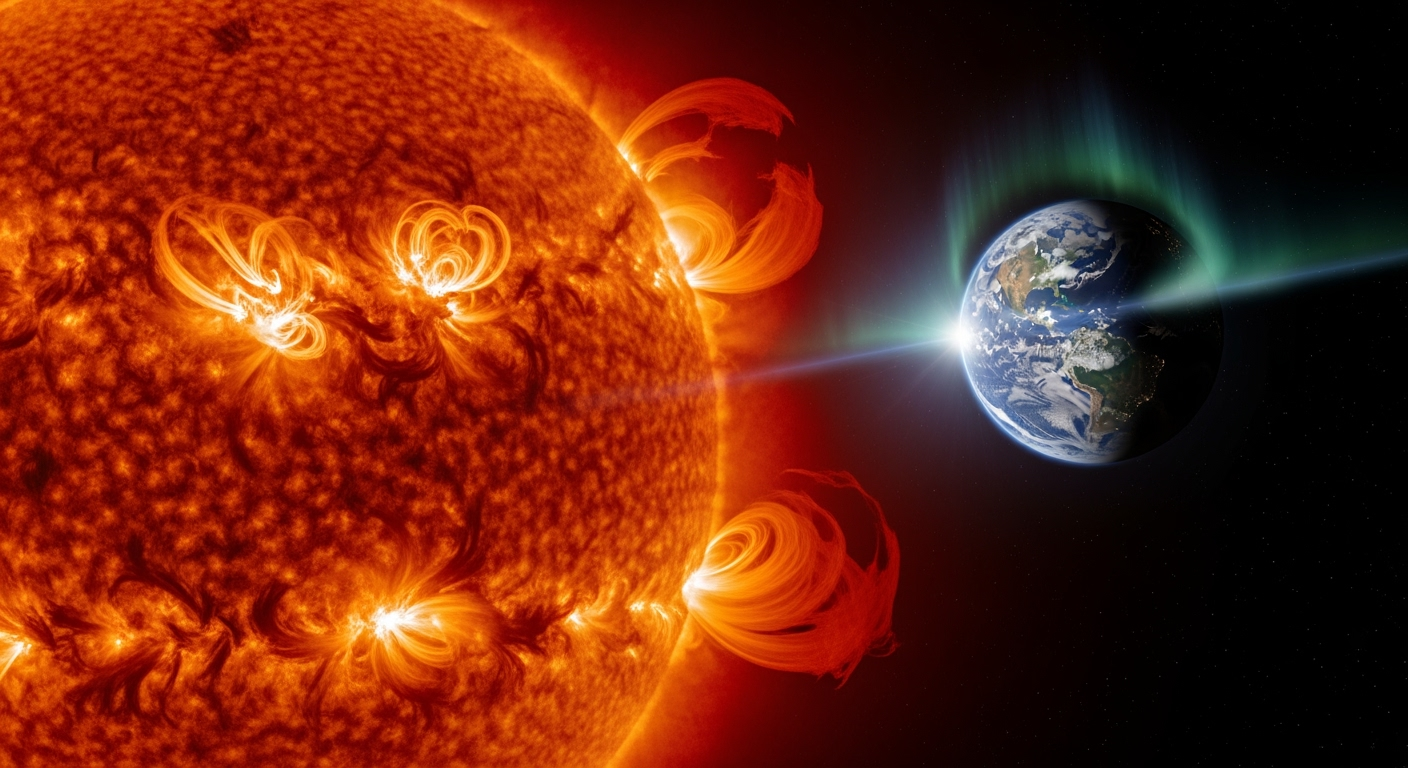Related Articles

The Hidden Danger: Unraveling the Complex Link Between Talc, Asbestos, and Cancer

The Hidden Sleep Divide: Why Women May Need More Rest Than Men





As the sun approaches the peak of its 11-year activity cycle, known as solar maximum, in 2025, scientists and industries globally are bracing for heightened solar storm activity. While these powerful celestial events offer spectacular aurora displays, they also pose significant challenges to the technology-dependent infrastructure underpinning modern society, raising questions about vulnerability and preparedness. The sun's current cycle, Solar Cycle 25, has already exhibited stronger activity than initially predicted, necessitating vigilant monitoring and proactive measures to mitigate potential disruptions across telecommunications, energy, and navigation systems.
The sun operates on an approximate 11-year cycle, transitioning between periods of minimal activity (solar minimum) and intense activity (solar maximum), during which its magnetic field is at its strongest, leading to a surge in solar flares and coronal mass ejections (CMEs). Solar Cycle 25 officially began in December 2019, and initially, predictions from 2019 suggested it would be a relatively weak cycle, peaking in July 2025 with a maximum sunspot number of around 115. However, recent observations have shown the sun's behavior to be far more active than initially forecast. Solar activity has increased more quickly and peaked at a higher level than the 2019 predictions indicated, with some data suggesting the peak may have even occurred between August and November 2024, or will reach its zenith by July 2025. This updated outlook projects a maximum sunspot number between 137 and 173, making it the most active solar period since 2002. Solar flares are sudden bursts of energy, while CMEs involve massive expulsions of solar material into space. When these energetic particles and plasma clouds reach Earth, they can interact with the planet's magnetic field, causing geomagnetic storms.
The primary concern with increased solar activity stems from the potential for geomagnetic storms to disrupt critical infrastructure that has become integral to daily life. These storms can generate geomagnetically induced currents (GICs) that pose a threat to power grids, potentially causing voltage instabilities, equipment damage, and widespread blackouts. Historic events, such as the 1859 Carrington Event, demonstrated the raw power of solar storms, causing telegraph systems to malfunction, shock operators, and even ignite fires. More recently, the 1989 Quebec blackout, which left six million people without electricity for nine hours, highlighted the vulnerability of modern power grids to solar activity.
Beyond power grids, the telecommunications sector faces significant risks. Solar storms can interrupt satellite communications, GPS systems, and radio signals. Satellite-based services, crucial for navigation, communication, and various industries, can experience disruptions, leading to flight delays and rerouting in aviation, and impacting high-accuracy Global Navigation Satellite System (GNSS) technologies used in construction, mining, and agriculture. In a 2024 exercise, a geomagnetic storm caused GPS farm equipment to malfunction, underscoring the real-world impact. Moreover, the internet infrastructure, particularly unprotected satellites and undersea cable repeaters, is vulnerable to powerful electromagnetic interference, with some research suggesting a severe solar storm could paralyze the internet long-term, potentially causing billions in economic damage.
Recognizing the escalating risks, governments and industries worldwide are intensifying efforts to enhance space weather preparedness. Agencies such as NASA and the National Oceanic and Atmospheric Administration (NOAA) are closely monitoring solar activity and providing forecasts. Space weather prediction panels continuously update forecasts for Solar Cycle 25, with models being refined as new observational data becomes available.
In 2024, the United States conducted its first-ever "Space Weather Tabletop Exercise" to assess its readiness for severe solar storms. This hypothetical drill, which coincidentally occurred during a real-world solar storm (the Gannon storm), revealed significant vulnerabilities, particularly in communication and forecasting capabilities. Recommendations from the exercise include improving coordination among government agencies, developing standardized communication templates, and deploying more satellites to enhance prediction and real-time data collection. Power grid operators are implementing measures to mitigate blackout risks, and telecommunications companies are bracing for potential interruptions. Businesses are advised to back up critical data, invest in surge protectors, and develop contingency plans. Individuals are also encouraged to stay informed and take proactive steps. The White House Office of Science and Technology Policy released a Space Weather Implementation Plan in December 2023, outlining actions to improve national preparedness over five years.
Despite the technological concerns, the solar maximum brings a breathtaking natural phenomenon: the aurora borealis and aurora australis. Increased solar activity means more frequent and intense aurora displays, which can be visible at lower latitudes than usual. Charged particles from the sun colliding with Earth's atmosphere create mesmerizing waves of green, red, and purple light, offering a spectacular show for skywatchers. In May 2024, an extreme G5 geomagnetic storm caused widespread northern and southern lights to be seen at low latitudes, giving millions their first view of the aurora. While the exact timing of the peak aurora activity can extend beyond the solar maximum itself, the period around 2025 is considered an exceptional time for aurora viewing. Importantly, experts emphasize that solar storms pose no direct risk to human life.
The 2025 solar maximum presents a dual reality: a heightened risk of technological disruptions due to increased solar activity, and the opportunity to witness more frequent and vibrant aurora displays. While the sun's unpredictable nature necessitates continuous vigilance, the proactive measures being adopted by governments, industries, and individuals are crucial in building resilience against space weather events. The lessons learned from past storms and ongoing research aim to safeguard the interconnected systems that define our modern world, ensuring that humanity can navigate the sun's fiery temper with minimal societal impact, while still appreciating its awe-inspiring celestial artistry.